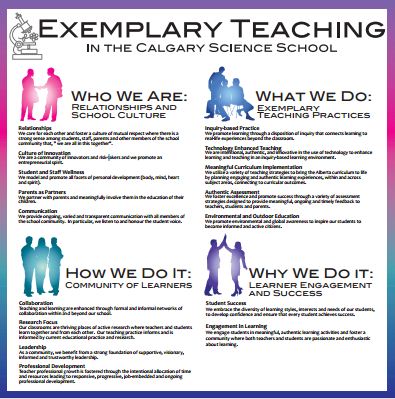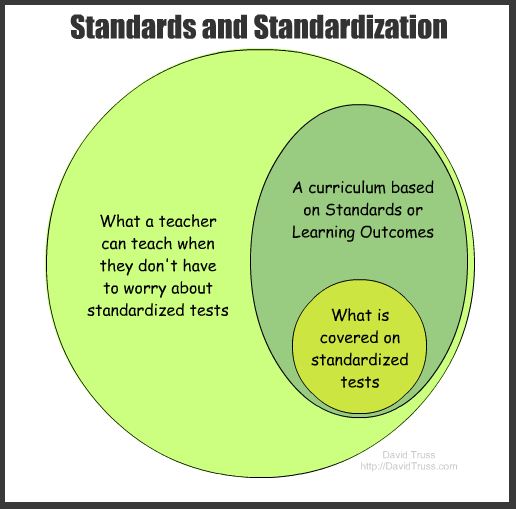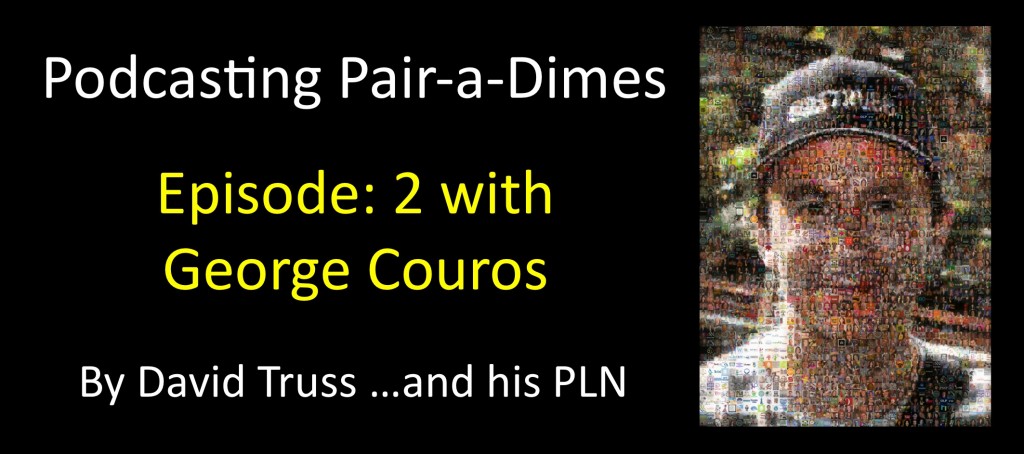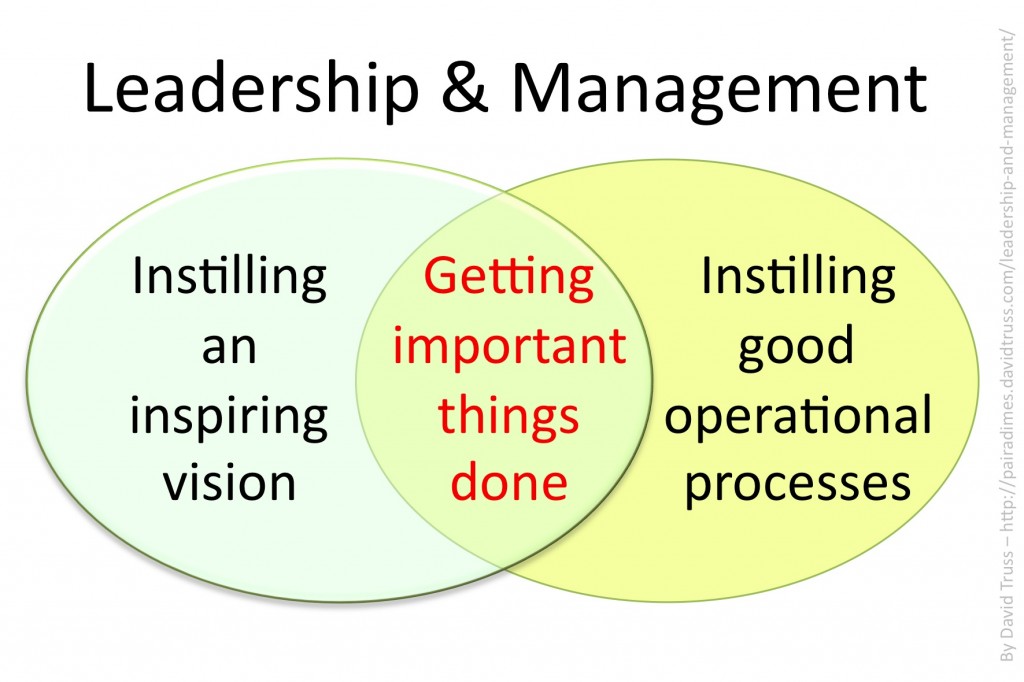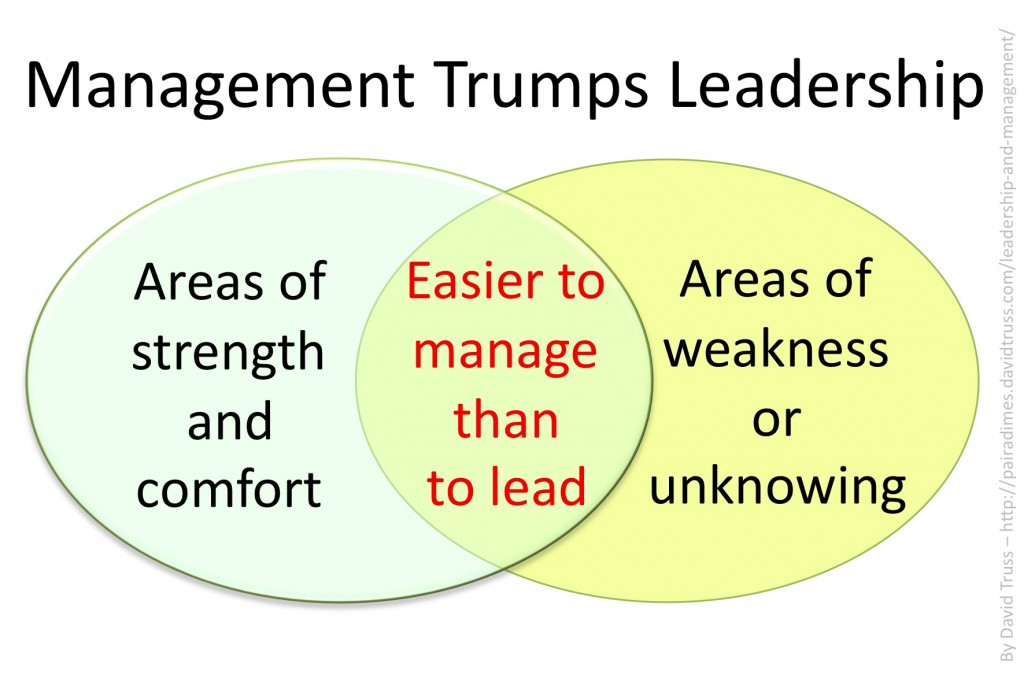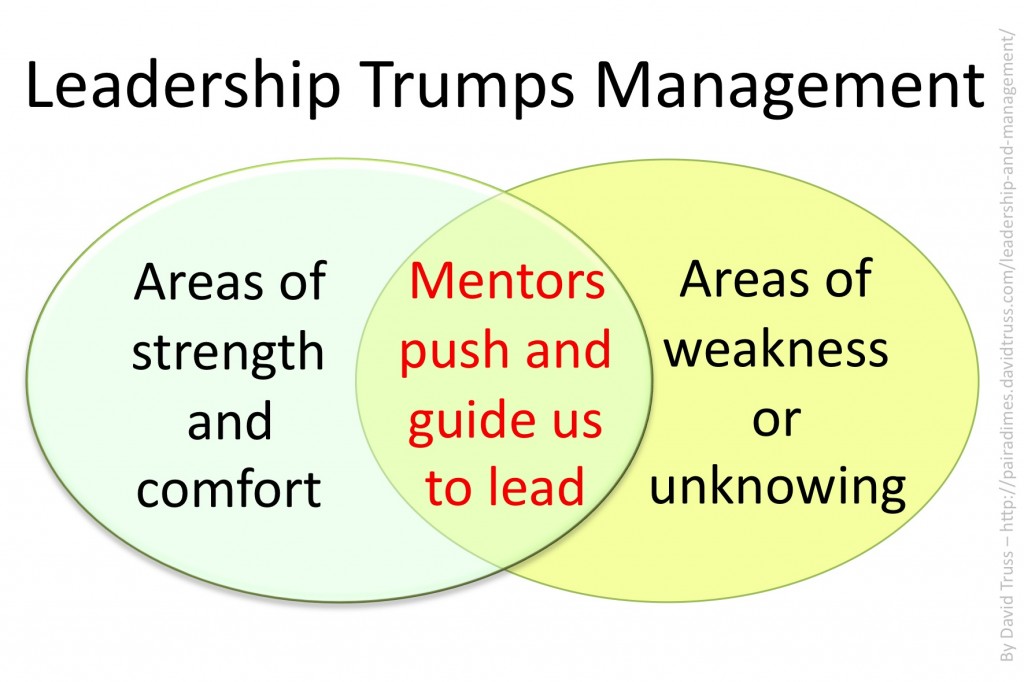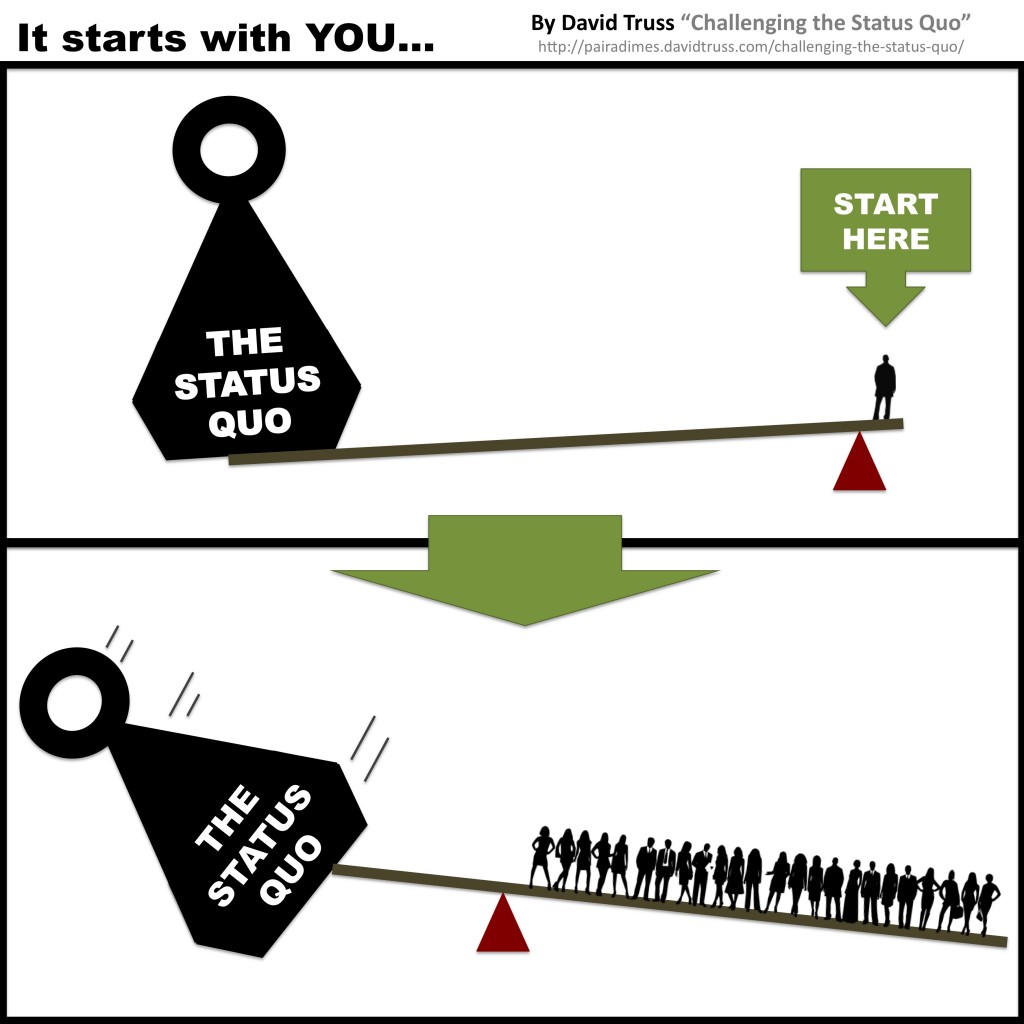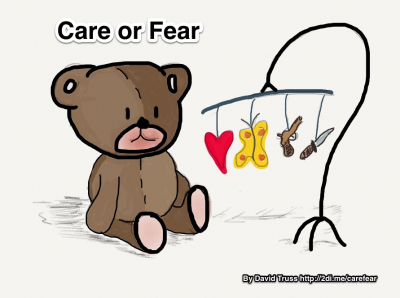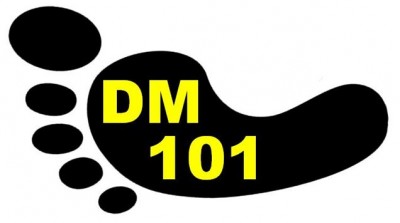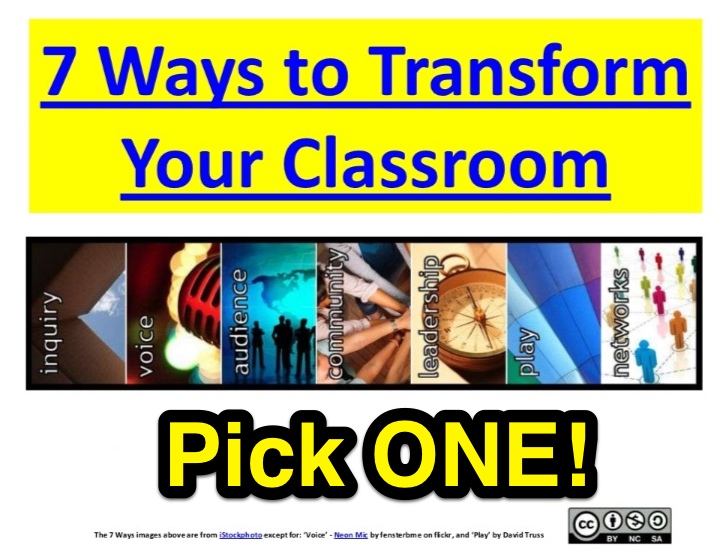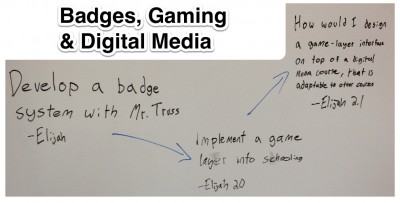Below is a complete Table of Contents for all my ‘Pair-a-Dimes for Your Thoughts’ blog entries
from April 2012, at the top, to March 2013, at the bottom.
Please visit my blog home page to see up-to-date posts: http://pairadimes.davidtruss.com
– – – – –
My 7th Blogiversary
I write for me, I share with you, and the world seems a little smaller.
Just like last year, here is my blog’s year in review: The posts I’ve written and a quote from each. I hope that you will find something that appeals to you. (Mouse-over the post title links to find out a bit more about each post.)
If you have subscribed to, commented on, linked to, or simply taken the time to read my blog… I say a heartfelt
Thank you!
– – – – –
5 under-watched TEDxEDU videos
…I think some real gems are being missed. Here are 5 Educational TEDx Videos that I think deserve to be paid attention to:
- Kim Cofino: Mobile, Connected, Collaborative [Watch on YouTube]
- Diana Laufenberg: How to learn? From mistakes [Watch on YouTube]
- Kiran Bir Sethi teaches kids to take charge [Watch on YouTube]
- Chris Kennedy – Students Live! Real-world Learning at the 2010 Olympic/Paralympic Games [Watch on YouTube]
- Dan Meyer – Math Curriculum Makeover [Watch on YouTube]
BYOL vs BYOD

I have an admitted bias here: I think a keyboard is still an essential tool in school. If you want to build inequity then have students try writing, for any extended period of time, on a phone -vs- on an iPad -vs- on a laptop. Essentially laptops, compared to phones or iPads, are a superior product for construction and creation of content rather than just consumption of content. This may change, but not soon enough. Looking ahead, I see student/family owned laptops as the best route to go. Here are some key points to consider:
– – – – –
Connect Ed Canada
Kristen very eloquently told us about how teachers are more like guides, and that the questions come from students, and how they don’t do work sheets. Throughout the tour it became evident that the work she shared was a product of her own exploration and interests. Julie too, shared incredible enthusiasm and interest in providing us with a detailed and comprehensive tour of this amazing school… but what shined through more than anything was that this was a place these students were proud of, and one that they helped to create.
– – – – –
Inquiry Resources from CSS and the ConnectedEd Canada Conference
Here is the recipe for those who want to plan a conference:
1. Run the first day in a great school, with classes in session and with student tour guides.
2. Invite presenters who want to have a conversation rather than do a presentation.
3. Provide ample time between sessions for conversations to continue.
4. Make digital conversations/social media conversations the expectation and the norm.
– – – – –
Blurred Identity Lines
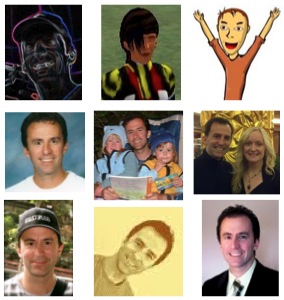
*My principle, Stephen Whiffin, often refers to the “Blurring of lines between living and learning,” and it is from this quote that the title of this post comes from. If I were to sum this post up on Twitter I’d say, (in 140 characters), “Although we share different things in different places, we are who we are, and slowly our online identity is becoming a fabric of our being.”
– – – – –
Still sold on Laptops over iPads
I know that I’ve already expressed this view in my BYOL vs BYOD post, but here are two more reasons why I think laptops are the better way to go… I find that I’m using my iPad more and more, but for consuming information, not creating it. Reason (1) comes from a student, while reason (2) is a strictly personal experience…
– – – – –
Personalization and Responsibility
In The Global Transformation in Education (Updated) Mark Treadwell discusses the ‘perfect storm’ in education which includes the intersection of 3 storms:
1. The arrival of new technologies, and a shift to the internet.
2. A better understanding of how the brain learns.
3. “The ability of young people to build their own creativity; to learn, to be able to research, the inquiry process, action learning, to actually be able to do their own learning and build understanding, and take that understanding and be creative with it.”
– – – – –
Standards and Standardization
This image was inspired by Janet Abercrombie’s post Are We Confusing Standards with Standardization?
Specifically the section: Clarification 3
If we agree that instructional standardization is unnecessary, we can maintain creativity and passion in a standards-based classroom.
But we need to make a few paradigm shifts.
Specifically…
– – – – –
Pushing and Nudging with Andy Hargreaves
I love how Andy Hargreaves always makes me think! See: The Fourth Way: The Inspiring Future for Educational Change
Here are some great quotes, via my notes and Twitter conversations from our school district’s morning with Andy:
– – – – –
Digital Literacy, toothpaste and the Inquiry Hub

In February I got to help write a course called Applications of Digital Literacy. As Jill, from Staff development, and I sat down to get things started, we discussed the fact that really we were developing a course that would hopefully be redundant in 5 years… because students by then would be coming out of Middle School with all of the necessary skills already. For now, I think this is a very valuable course and one essential for students at the new Inquiry Hub.
– – – – –
7 Ways to Transform Your Classroom

How will you (continue to) transform your classroom into an
inquiry-driven, collaborative, and engaging learning environment?
(Link to the Blackboard Collaborate recording, and also to the Classroom 2.0 Live! Webinar show page.)
– – – – –
Podcasting Pair-a-Dimes 1 – With Wes Fryer at Unplugd12
Podcast: Play in new window | Download (Duration: 23:20 — 11.5MB)
Wes shares some great podcasting tools, then we discuss digital media and digital design, badges, and creating those ‘Ah-ha’ moments in classrooms out of the interaction and creation of openly shared content.
– – – – –
Podcasting Pair-a-Dimes 2 – With George Couros
Podcast: Play in new window | Download (Duration: 22:22 — 21.3MB)
We talked about leading and learning ‘out in the open’. We discuss harnessing Twitter, reflecting and learning on blogs, taking risks, and taking advantage of ‘the wisdom in the room’.
– – – – –
Leadership and Management
Part 1
Part 2
Part 3
– – – – –
Classes of Donkeys
I read an article in Mind/Shift recently that really bothered me. It was the title that drew me in: “What Works in Tech Tools: Spotlight on ClassDojo“. I had already seen that ClassDojo was a behaviour management tool and thought, ‘Really? This is a tech tool that works?’
– – – – –
Challenging the status quo
Educational bloggers blogging about things that need to be changed… This isn’t a post to read from start to finish. Instead, pick a topic that may challenge the status quo in your school or district and dig in. Read, tweet, share, write your own post, comment… it is fodder for YOU to challenge the status quo!
Here are the TOPICS discussed…
– – – – –
Learning about Learning
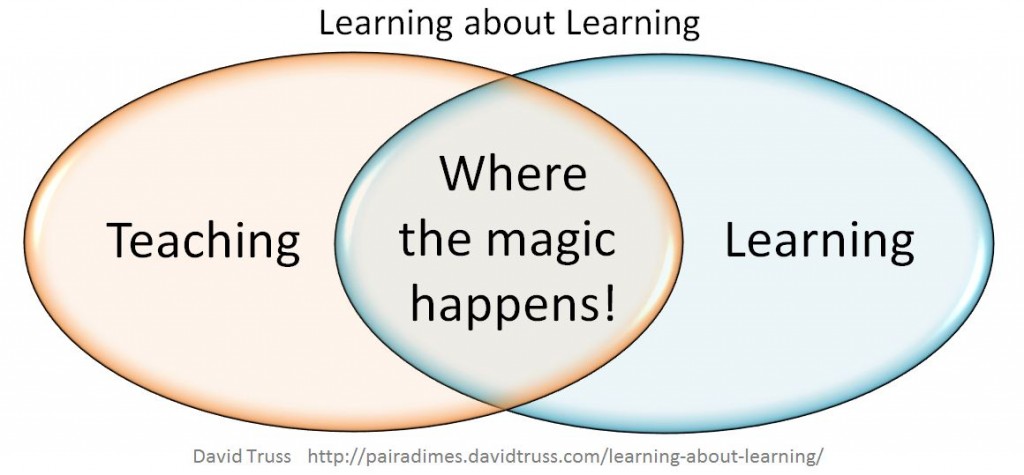 In Visible Learning John Hattie basically says that almost everything we do in our efforts to help students in schools has a positive effect on students. However, much of what we do actually isn’t terribly effective… despite our beliefs in these practices.
In Visible Learning John Hattie basically says that almost everything we do in our efforts to help students in schools has a positive effect on students. However, much of what we do actually isn’t terribly effective… despite our beliefs in these practices.
– – – – –
Care or Fear
I’ve seen a number of blog posts where educators are suggesting the topic of “Am I safe?” and “Could this happen here?” after the school shooting. That bothers me. I’m willing to bet that hundreds of thousands of students that might have felt safe in their school, and would not have questioned their own safety, will now think of that question and perhaps be more frightened than if that question did not get discussed.
– – – – –
New Perspective
I’m still thinking (like many of you) about the year ahead and what it will bring… Or more importantly, what I will make of it! Starting in November of 2011, when I was creating my K12Online ‘Transforming Education‘ video presentation, followed by my ‘Let’s Transform Education‘ conversation starter in early 2012, I’ve been trying to focus on the idea that education is not broken! I think that if we want to create an innovative and exciting future, we can’t do it from a perspective that things need repairing or fixing.
– – – – –
A new tragedy of the commons
Indeed we have a new, social-emotional, tragedy of the commons. Despite our understanding that perpetuating the onslaught of negative news is, ‘contrary to [our] long-term best interests’, we still do it. And social media isn’t making things any better. We used to be able to blame the media monopolies and moguls, but now we are the news-makers: We publish freely, and quickly and without thought as to how we are part of the problem.
– – – – –
Applications of Digital Literacy
Applications of Digital Literacy is a course that I helped create for the Inquiry Hub. It is one of two courses principal Stephen Whiffin and I decided to develop as local board approved courses*, the other course is Foundations of Inquiry. Stephen humourously calls these ‘mandatory electives’ since we decided that these would be requisite courses for anyone coming to the Inquiry Hub.
– – – – –
Inquiry Hub – Rethink Learning
– – – – –
Pick ONE
This is what my presentation entailed:
- A 3 Minute Conversation Starter
- 7 Ways to Transform Your Classroom
- A chance to contribute to a 7 Ways Google Document. (The document is open, feel free to add to it.)
- The student-presented slides from the ‘Inquiry Hub – Rethink Learning‘ Information Session that we had presented the day before. (Slides 27-46, skipping over a few slides)
- A video of some students talking about their inquiries, related to a grant that one student applied for and spoke about in the Information Session slides.
– – – – –
Badges, Gaming, and Digital Media
I’m very interested in using gaming strategies in education and I’m also interested in providing students with opportunities to both learn at their own pace, and also to represent how they have met criteria or learning outcomes in ways that students want to, rather than ways dictated by teachers.
– – – – –
What is your true story of connectedness?
This actually happened “Five years and a few days ago”, (not 6 like I say in the video). And I got my answer in 8 minutes, not 12… But other than those minor errors, here is my ‘True Story of Connectedness‘:
– – – – –
Still the same conversation
If we are asking the question “Do we need to change?” then we are not yet changing and adapting to the conditions that made us ask the question. It is a paradigm shift to move beyond the question of need, recognize necessity, and act in a proactive rather than reactive way.
– – – – –
Disruptive Forces
Sean continued the thought, “To be disruptive it must transform the model. Really hasn’t happened for 100yrs – which is surprising. There needs to be a full scale re-imaging of ed practice.” @backcountrynut
To which I said, “It is happening NOW. 3 disruptive forces: 1. Google, 2. Wireless, 3. BYOD.”
– – – – –
The Lone Wolf and the Unplug’d Conference Letters
Dear Lone Wolf,
It seems odd to speak of lone wolves to you, a person that is so intricately… connected. And yet, as you read on, you will relate to the loneliness that I describe, that I too have shared. Sometimes it is surprisingly easy to ignore. Other times it seems as though you are truly the lone wolf. You can hear the distant cries of other wolves through the night air, but your days are spent in solitude. Alone.
– – – – –
Why Blog?
– – – – –
Data Driven Decisions in BC
What I will do is share my thoughts as they relate to open data and the principles of Open Government shared by the Ministry of Education: Collaboration, Transparency, and Participation.
These thoughts are my own, but many smart people in the room influenced my thinking… That’s my way of saying, “These are my take-always from the meeting, but not necessarily what was discussed. I took no notes, and I wore many hats: parent, teacher, administrator, tax-payer, critic, and learner.
– – – – –
That’s a year of posts! I hope that you have or that you will find something valuable to your own learning, and as always, I welcome your feedback.
Think good thoughts, say good words, do good deeds.
